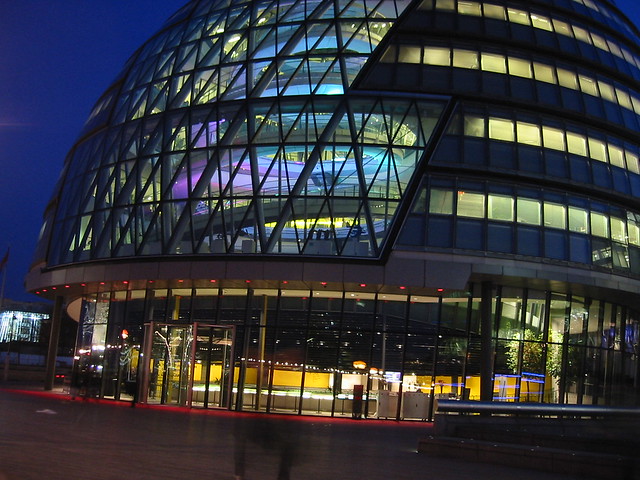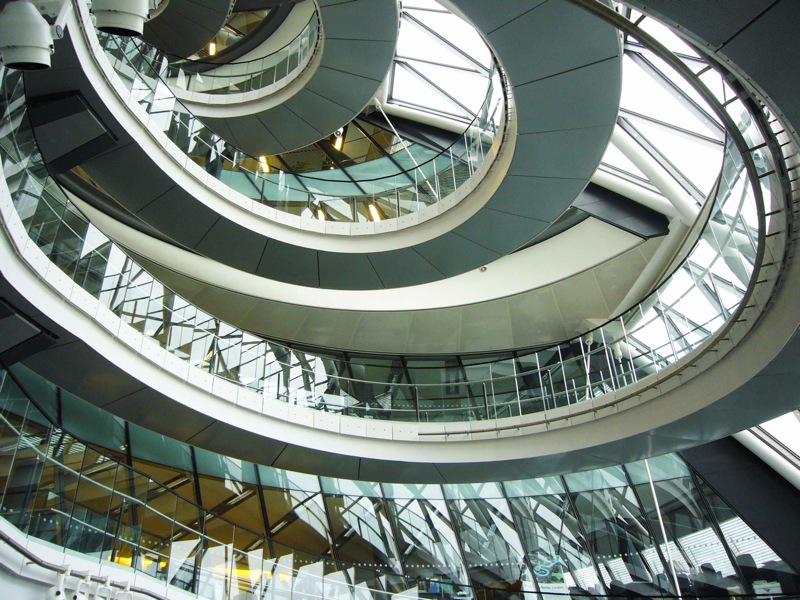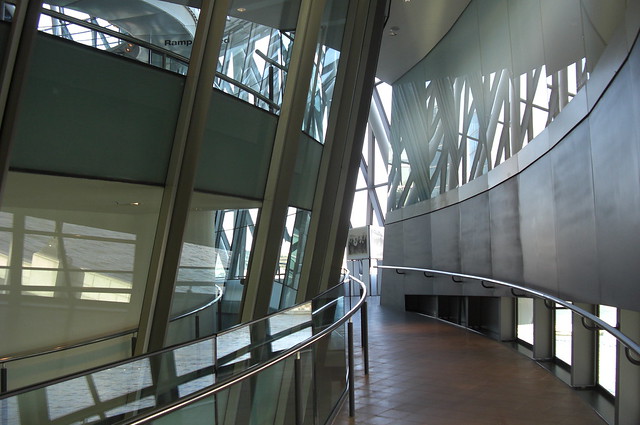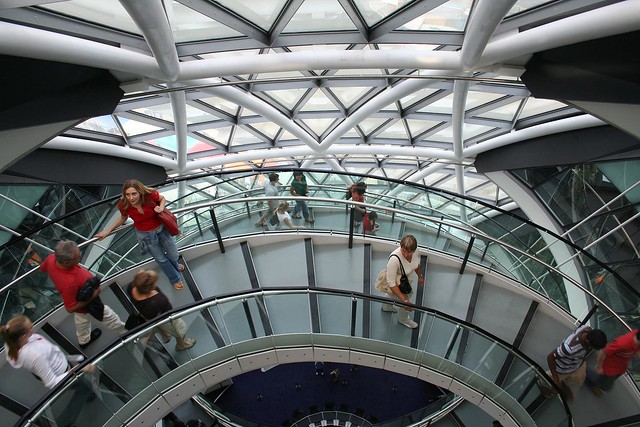
Completed in 2002, Norman Foster combined his interest of urban circulation with new techniques for a curved structure.
A grand spiral staircase reinforces the same round skyscraper form he used in the Swiss Re tower. It organically tilts toward the sun and each level cantilevers, providing some shade on that south end and opening the other end to views out to the river Thames and tower bridge.
This flowing theme continues on the entire site, with an urban outdoor plaza next to the river. The flowing procession takes the form of a staircase inside which swirls above the governmental debate chamber. It is a representation of Hegel’s philosophy of social development- which became manifest in communism.
Communism. Hegel considered the development of Weltgeist through dialectic and conflict. Karl Marx illustrated history as a series of thesis and anti-thesis which resulted in a synthesis and elevation to a higher system. It’s an upward spiral to a higher society with production at the base (street level) and communism at the top.

(sashafatcat– flickr/creative commons license)

(_sarchi– flickr/creative commons license)

(sashafatcat– flickr/creative commons license)

(.Martin.– flickr/creative commons license)

(Olivier Bruchez– flickr/creative commons license)

(Dimitry B– flickr/creative commons license)

(ML42– flickr/creative commons license)

(.Martin.– flickr/creative commons license)

(.Martin.– flickr/creative commons license)
